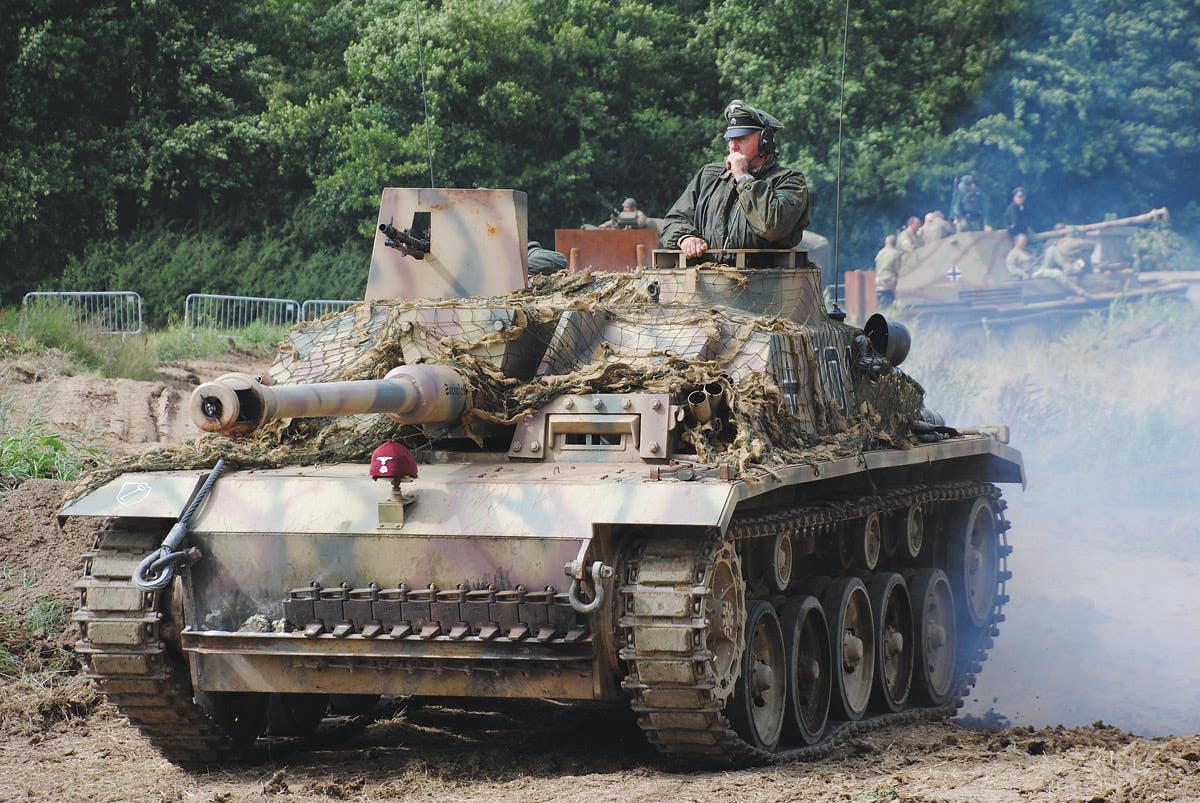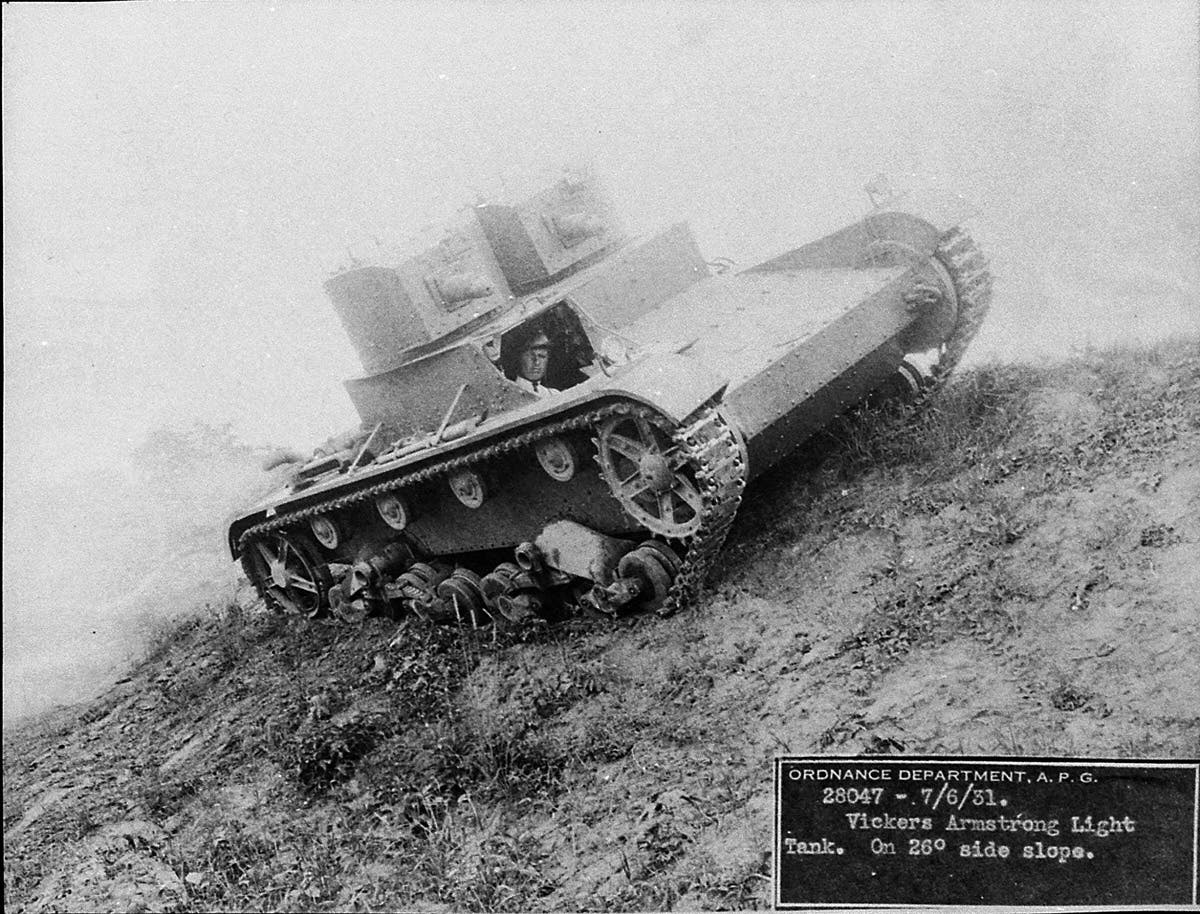It’s the Schwimmwagen
A look at Germany’s unique swimming car.
The Schwimmwagen was a variant of the Volkswagen Beetle conversion put into mass production for the Wehrmacht in 1938 under the name Kübelwagen (literally translated as “bucket-car”). The variant was developed by Erwin Komenda, a car body designer employed by Ferdinand Porsche, in 1940, to provide an amphibious version. Komenda designed a new unitized body tub, since the flat floor pan chassis of the existing Kübelwagen vehicles was unsuited to smooth movement through water. Komenda patented his design for the swimming car at the German Patent office.
This new vehicle was a combination of the Volkswagen Type 86 four-wheel drive Kübelwagen with elements of the Volkswagen Type 87 command car, using the same air-cooled four-cylinder engine developing about 25 horsepower, and a manual transmission with four speeds, a transfer case and four-wheel-drive available only in first gear and reverse. These first series vehicles were called Type 128.
Dr. Porsche, in his 1976 memoir, We At Porsche, wrote: “By August (1941), the first prototype was ready for testing. I was asked to bring this car to Hitler’s headquarters for a demonstration, and he appeared to be pleased. He took a long time inspecting the vehicle and asked the most detailed questions.”
The Type 128 was quickly put into production despite several design flaws that soon became apparent in the field. The most serious of these was that that the body/hull was too weak for off-road use. It had insufficient torsional rigidity and suffered ruptures at the front cross-member and in the wheel wells. This, of course, was unacceptable for an amphibious vehicle, and production of the Type 128 ceased with less than 100 units made.
A revised design with a new reinforced hull resulted in the Porsche/Volkswagen Schwimmwagen Type 166, which not only proved far more durable than the early models, but was also better suited for mass production. The first Type 166 was tested at the Max Eyth Reservoir outside Stuttgart in March 1942, with acceptance by the High Command of the Army Weapons Office given on May 29. On June 6, 1942 — two years before D-day in Normandy -— the initial run of Type 166 models rolled off the assembly lines. During July 1942, snow testing was conducted on Grossglockner Mountain. By the end of 1942, Wehrmacht and SS units in the field began receiving the Type 166 Schwimmwagens.
Of the Type 166, Dr. Porsche wrote: “This machine could carry four people and differed from its predecessor, the Type 128, not only in size but in detail. It carried much less equipment … an anchor and similar equipment usually found in Navy craft were considered unnecessary. Its prime purpose was for officers of advance units to move across country, ford rivers and carry out reconnaissance by water. In fact, officers used some of them as platforms for duck shooting! Our experience with the Type 166 amphibian during the Russian campaign was incredibly good. This compact machine had no trouble using the same terrain as tanks! I can speak with some satisfaction, as I was responsible for all Kubelwagen production — both land and amphibian types — from 1939 until disaster overtook us in 1945.”
One may presume that “disaster” was Germany losing the war.
From 1941 to 1944, approximately 15,600 Type 166 Schwimmwagens were built; 14,276 of these came from the Fallersleben Volkswagen factory, and 1,308 were built by Porsche at Stuttgart, with the bodies manufactured by Ambi-Budd in Berlin. Porsche models differed only in a few details. All Type 166 Schwimmwagens were four-wheel drive in first gear (and reverse gears on some models) and had ZF self-locking differentials on the front and rear axles. As with the Kübelwagen, Schwimmwagens had rear portal axles, which provided increased ground clearance, while at the same time reducing driveline torque stresses at the wheels. The Type 166 Schwimmwagen had a top speed of 50 mph (80 km/h) on land. When afloat, a screw propeller would be lowered using a simple iron rod. When in place, a three-dog clutch coupling provided drive straight from an extension of the engine’s crankshaft through a waterproof seal. This meant that propeller could only drive forward.
The Type 166 Schwimmwagen had a top speed of 10 km/h (6 mph) in the water. For reversing in the water there was the choice of using the standard equipment paddle or running the land drive in reverse, allowing the wheel-rotation to stop or slowly move the vehicle backward. The front wheels acted as rudders, so steering was done with the steering wheel both on land and on water. The Schwimmwagen could also be steered and/or propelled by using the standard-equipment paddles. Type 166 Schwimmwagens were equipped with removable canvas tops, spare parts, a spare wheel, and a shovel, pickaxe, and paddles.
The first of these vehicles were issued to SS units on the eastern front and proved valuable in marshy terrain. Many also served in Wehrmacht units in North Africa, Tunisia, Sicilia, and Europe. Like Kübelwagens, they served in nearly all theaters of war. The Type 166 Schwimmwagens were lightweight and reliable, simple to operate and repair, and were used for scouting, transport, dispatching, command cars, and regular officer cars on the frontline. Soldiers sometimes nicknamed them “The Frosche” (“frog”).
Although over 20,000 GMC DUKW amphibious trucks were produced by the United States during WWII, the Volkswagen Type 166 Schwimmwagen is considered to be the most-produced amphibious car in history.
Another note on Type 166 Schwimmwagen came from American author Walter Henry Nelson in his 1965 book, Small Wonder: The Amazing Story of the Volkswagen. “The British Army captured the VW works at Wolfsburg in 1945, and especially liked the Schwimmwagen. They would hold games in which they would run it off wharves into the Mittelland Canal at 40 mph, hitting the water with a great splash and then driving the cars up and down the canal.”
An accurate and detailed introduction to the Type 166 Schwimmwagen may be found in the December, 1944 edition of the Intelligence Bulletin, which was a booklet distributed by the U.S. Military Intelligence Service throughout World War II to inform officers and enlisted personnel of the latest enemy tactics and weapons:
The German light amphibious car, which resembles a small civilian sports car and has a boat-shaped open body, is highly maneuverable. The Germans call this vehicle a Schwimmwagen, literally enough, while on the Allied side it sometimes is spoken of as an amphibious Volkswagen. The light amphibious car represents a development of the original Volkswagen (“Peoples Car”), a light civilian vehicle that Hitler once promised to manufacture in huge quantities and bragged about as one of the future blessings of German National Socialism.
The light amphibious car has the following dimensions:
— Overall length (with propulsion unit in land-travel position): 11 ft. 8 in.
— Overall width: 4 ft. 10 in.
— Overall height (with top up): 5 ft. 2 in.
— Tread width, centerline to centerline: 4 ft.
— Wheelbase: 78 in.
— Ground clearance (unloaded): 11.5 in.
— Approximate depth of immersion when floating: 2 ft. 6 in.
— Freeboard (loaded): 13 in.
The following details were obtained from a manufacturers plate in the engine compartment of a car, which was examined recently:
— Type: 166
— Payload: 958 lbs.
— Weight empty: 2,002 lbs.
— Permissible axle load (front): 1,190 lbs.
— Permissible axle load (rear): 1,775 lbs.
— Permissible total weight: 2,965 lbs.
— Engine capacity: 1,131cc
This specimen was fitted with “run-flat” tires, size 7.85 x 16.
The engine is of the 4-stroke, 4-cylinder, horizontally opposed, air-cooled type, similar to that of the ordinary Volkswagen, Model 82, and has a capacity of 1,131cc. When the car is afloat, the crankshaft leading through the back of the vehicle effects the propulsion. The crankshaft ends in teeth which form a dog-clutch, which engages either with the propeller drive, when the latter is in position, or with the starter handle.
There are four forward gears, and one reverse, and also an auxiliary lever for a low gear for cross-country driving and for engaging or disengaging the 4-wheel drive. When the auxiliary lever is in the forward (cross-country) position, gear must not be changed, according to a warning notice on the instrument panel.
For starting under winter conditions, a specially volatile starting fuel is used. This is contained in a small auxiliary fuel tank with a capacity of about 1 liter, connected by a synthetic rubber tube to the fuel pump. This auxiliary tank is situated in the engine compartment, which is in the rear of the vehicle.
The cooling-fan intake is between the two rear seats. A transverse exhaust silencer is mounted over the engine compartment, and discharges on both sides. The body is of pressed steel with welded seams. The shaft entrances are made watertight by corrugated rubber tubing. An independent torsion-bar suspension is employed on each of the front wheels.
When the three-blade propeller unit is not in use, it folds over the back of the vehicle. This unit is provided with a chain drive to a sprocket, the shaft of which is provided with teeth, which engage with those on the crankshaft end. In water, as on land, steering is effected by the conventional steering wheel, which governs the front wheels of the vehicle. When the car is traveling through water, the transmission is neutral, and the accelerator regulates the speed.
The instrument panel is fitted with a switch for speedometer lighting, a charging indicator (red), an oil indicator lamp (green), a plug for the inspection lamp, a speedometer, and a combined lamp-and-ignition switch. Beneath the instrument panel are a gasoline filter, the auxiliary fuel pump, and a lever for operating the pump for one-shot lubrication.
The foot controls comprise (from left to right) a dimmer switch, clutch, foot brake, and accelerator.
The hand controls are the gear lever, a lever for putting the 4-wheel drive and the cross-country gear — or both — into operation, a small lever for operating the choke, and the hand brake.
Love amphibious vehicles? Here are a few more articles for your reading pleasure.








